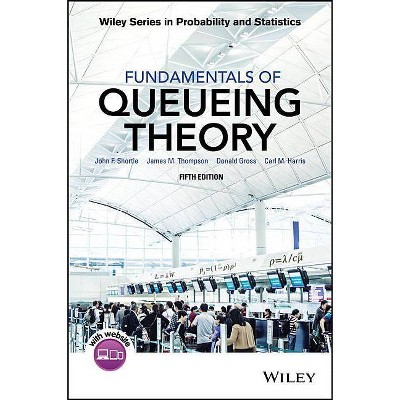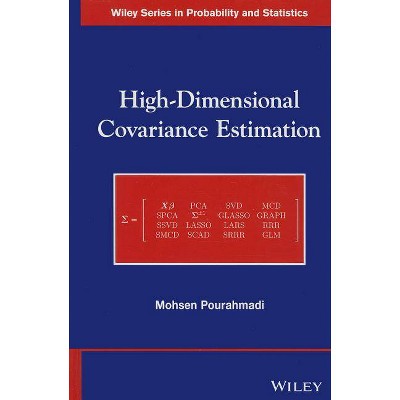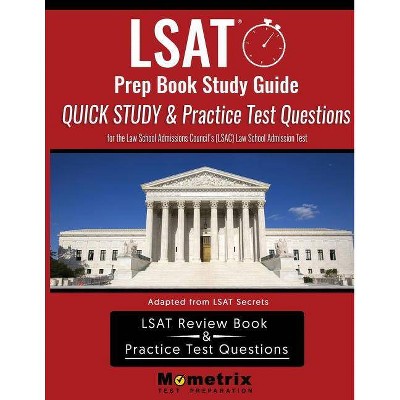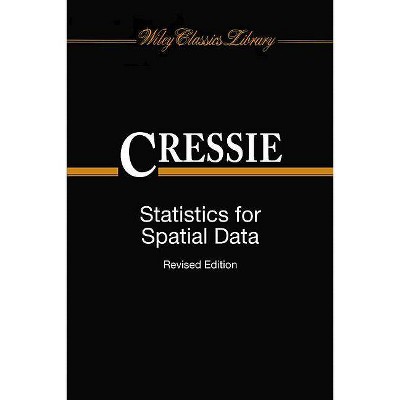Predictive Analytics - (Wiley Probability and Statistics) by Ajit C Tamhane (Hardcover)

Similar Products
Products of same category from the store
AllProduct info
<p/><br></br><p><b> About the Book </b></p></br></br>"Predictive analytics is the branch of data mining concerned with the prediction of future probabilities and trends. The central element of predictive analytics is the predictor, a variable that can be measured for an individual or other entity to predict future behavior. For example, an insurance company is likely to take into account potential driving safety predictors such as age, gender, and driving record when issuing car insurance policies. Multiple predictors are combined into a predictive model, which, when subjected to analysis, can be used to forecast future probabilities with an acceptable level of reliability. In predictive modeling, data is collected, a statistical model is formulated, predictions are made and the model is validated (or revised) as additional data becomes available. Predictive analytics are applied to many research areas, including meteorology, security, genetics, economics, and marketing, among others. The use of a computer can alleviate stressful computations, especially those involving big data"--<p/><br></br><p><b> Book Synopsis </b></p></br></br><p><b>Provides a foundation in classical parametric methods of regression and classification essential for pursuing advanced topics in predictive analytics and statistical learning</b></p> <p>This book covers a broad range of topics in parametric regression and classification including multiple regression, logistic regression (binary and multinomial), discriminant analysis, Bayesian classification, generalized linear models and Cox regression for survival data. The book also gives brief introductions to some modern computer-intensive methods such as classification and regression trees (CART), neural networks and support vector machines.</p> <p>The book is organized so that it can be used by both advanced undergraduate or masters students with applied interests and by doctoral students who also want to learn the underlying theory. This is done by devoting the main body of the text of each chapter with basic statistical methodology illustrated by real data examples. Derivations, proofs and extensions are relegated to the Technical Notes section of each chapter, Exercises are also divided into theoretical and applied. Answers to selected exercises are provided. A solution manual is available to instructors who adopt the text.</p> <p>Data sets of moderate to large sizes are used in examples and exercises. They come from a variety of disciplines including business (finance, marketing and sales), economics, education, engineering and sciences (biological, health, physical and social). All data sets are available at the book's web site. Open source software R is used for all data analyses. R codes and outputs are provided for most examples. R codes are also available at the book's web site.</p> <p><i>Predictive Analytics: Parametric Models for Regression and Classification Using R</i> is ideal for a one-semester upper-level undergraduate and/or beginning level graduate course in regression for students in business, economics, finance, marketing, engineering, and computer science. It is also an excellent resource for practitioners in these fields.</p><p/><br></br><p><b> From the Back Cover </b></p></br></br><p><b>Provides a foundation in classical parametric methods of regression and classification essential for pursuing advanced topics in predictive analytics and statistical learning</b> <p>This book covers a broad range of topics in parametric regression and classification including multiple regression, logistic regression (binary and multinomial), discriminant analysis, Bayesian classification, generalized linear models and Cox regression for survival data. The book also gives brief introductions to some modern computer-intensive methods such as classification and regression trees (CART), neural networks and support vector machines. <p>The book is organized so that it can be used by both advanced undergraduate or masters students with applied interests and by doctoral students who also want to learn the underlying theory. This is done by devoting the main body of the text of each chapter with basic statistical methodology illustrated by real data examples. Derivations, proofs and extensions are relegated to the Technical Notes section at the end of each chapter, Exercises are also divided into theoretical and applied. Answers to selected exercises are provided. A solution manual is available to instructors who adopt the text. <p>Data sets of moderate to large sizes are used in examples and exercises. They come from a variety of disciplines including business (finance, marketing and sales), economics, education, engineering and sciences (biological, health, physical and social). All data sets are available at the book's web site. Open source software R is used for all data analyses. R codes and outputs are provided for most examples. R codes are also available at the book's web site. <p><i>Predictive Analytics: Parametric Models for Regression and Classification Using R</i> is ideal for a one-semester upper-level undergraduate and/or beginning level graduate course in regression for students in business, economics, finance, marketing, engineering, and computer science. It is also an excellent resource for practitioners in these fields.<p/><br></br><p><b> About the Author </b></p></br></br><p><b>Ajit C. Tamhane, PhD, </b> is Professor of Industrial Engineering & Management Sciences with a courtesy appointment in Statistics at Northwestern University. He is a fellow of the American Statistical Association, Institute of Mathematical Statistics, American Association for Advancement of Science and an elected member of the International Statistical Institute.
Price History
Price Archive shows prices from various stores, lets you see history and find the cheapest. There is no actual sale on the website. For all support, inquiry and suggestion messages communication@pricearchive.us




















